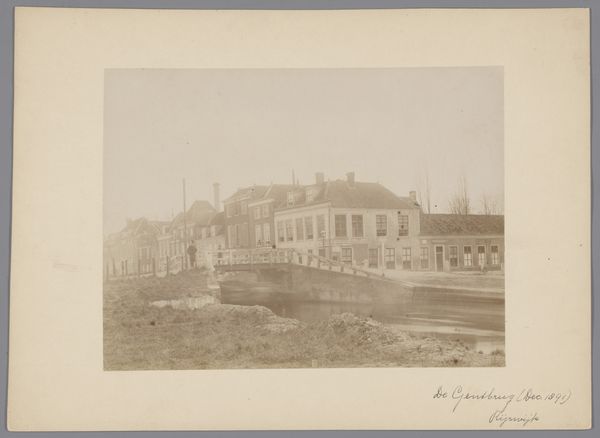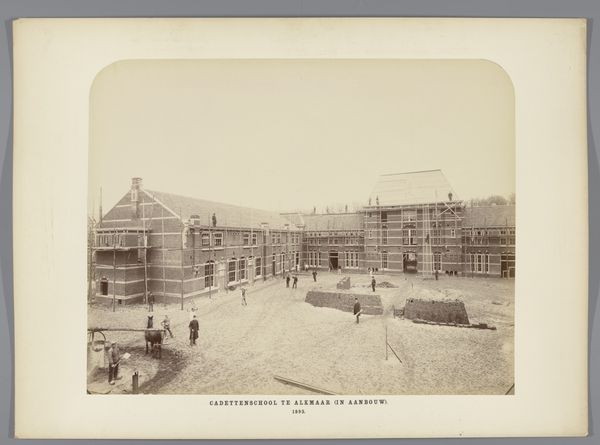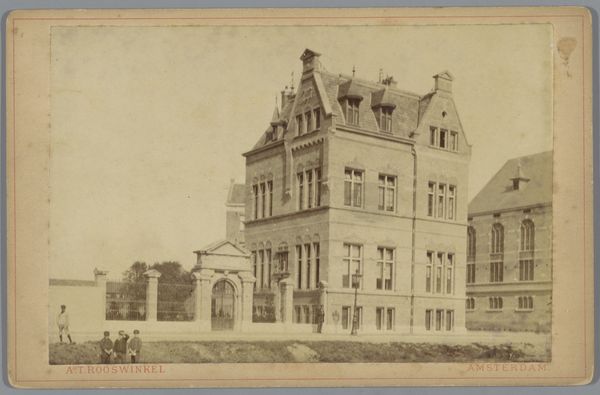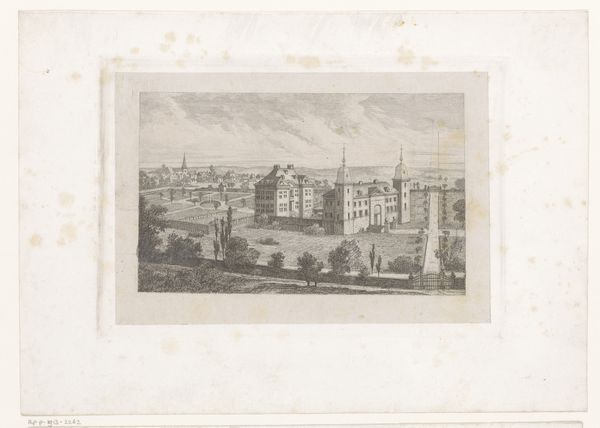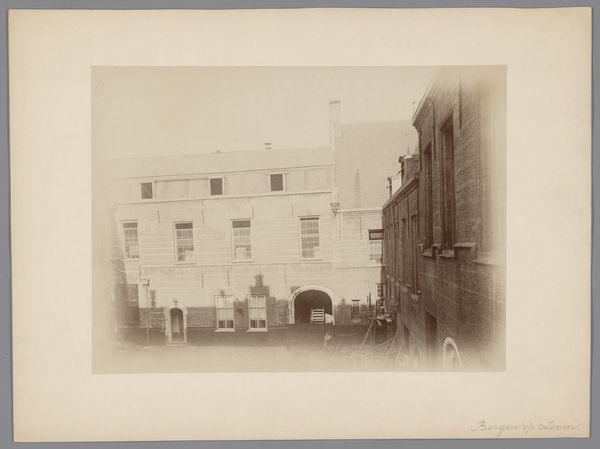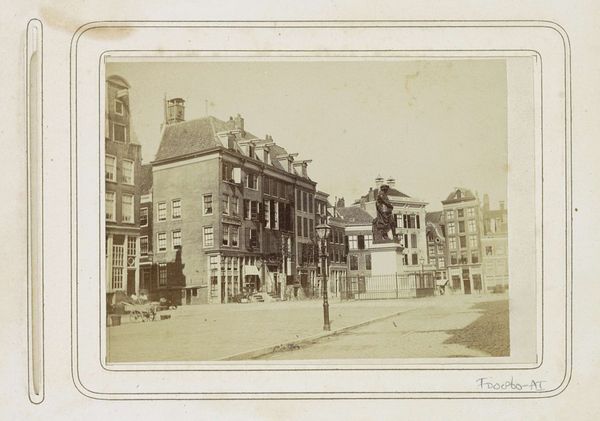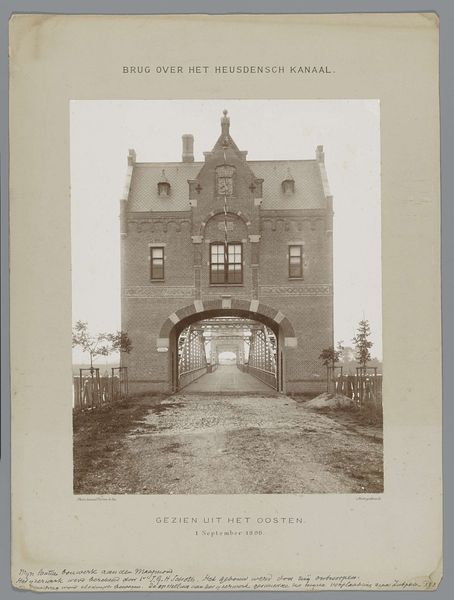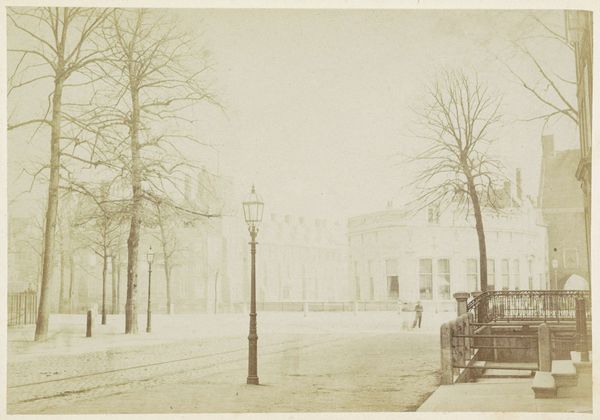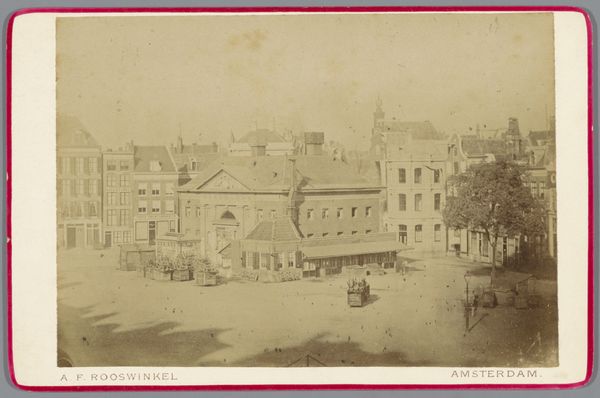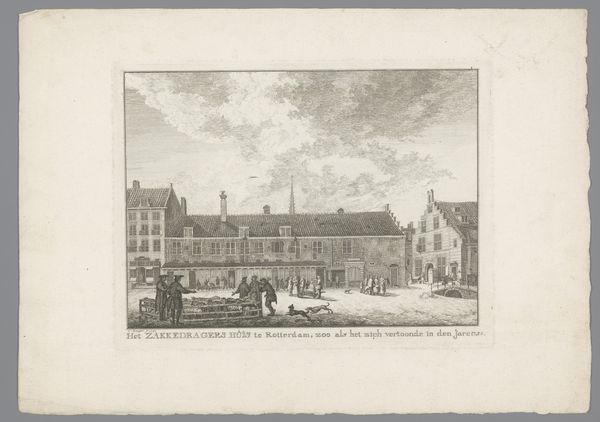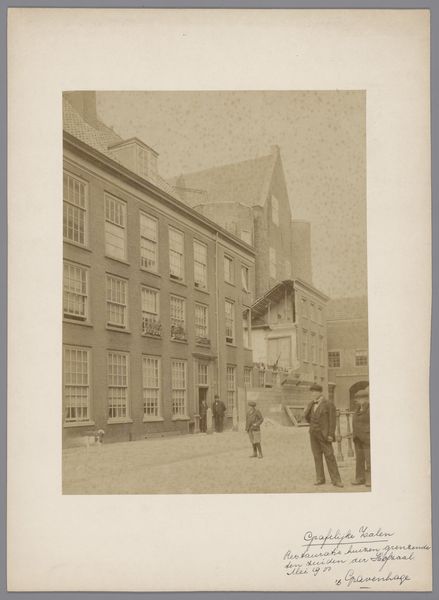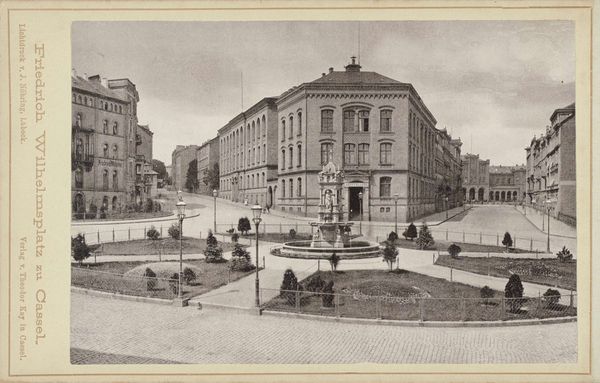
Binnenplaats van het Wilhelmina Gasthuis in Amsterdam Oud West 1880 - 1920
0:00
0:00
photography, albumen-print
#
dutch-golden-age
#
landscape
#
archive photography
#
photography
#
cityscape
#
albumen-print
#
realism
Dimensions: height 205 mm, width 275 mm, height 285 mm, width 355 mm
Copyright: Rijks Museum: Open Domain
Editor: Here we have an albumen print, a photograph titled "Binnenplaats van het Wilhelmina Gasthuis in Amsterdam Oud West," taken sometime between 1880 and 1920 by an anonymous artist. The stillness of the scene is striking, with these figures frozen in time. What catches your eye in this image? Curator: Immediately, the albumen print process itself becomes crucial. We’re seeing not just the depicted gasthuis—the hospital—but also a trace of labour, a particular material reality. The production of albumen paper was itself industrial, relying on egg whites, demanding its own economy of resources. Who was producing this paper? What were their working conditions? The photograph aestheticizes the space, but obscures that history of its making. Editor: So you're saying that the physical process of creating the image adds another layer of meaning? Curator: Precisely. The print presents this rather orderly scene – the architecture, the staff and patients – and the photographer’s positioning emphasizes a clear system of power and observation, one perhaps aligned with that of medical authority within the Gasthuis. Editor: Interesting. So the act of creating this image involved a series of steps that relate to labor and power. Does the built environment play into that too? Curator: Absolutely. Consider the design and layout. Notice the perspective leading the eye toward the central building. It emphasizes the institution’s role in city planning. Photography like this also became a tool for urban planning, surveillance, and documentation—integral to social control in the developing metropolis. This photo, in its materiality and composition, invites us to think about the intertwined relationship of material, labor, and representation within this historical context. Editor: I never thought about it that way! It's like the photo itself becomes a document not just of a place, but of the systems in place at the time. Curator: Exactly! Recognizing that helps us unpack deeper narratives. Editor: I see that this process provides additional frameworks that were previously unrecognized, enabling an appreciation that delves further than the artwork's aesthetic aspects. Thanks!
Comments
No comments
Be the first to comment and join the conversation on the ultimate creative platform.

